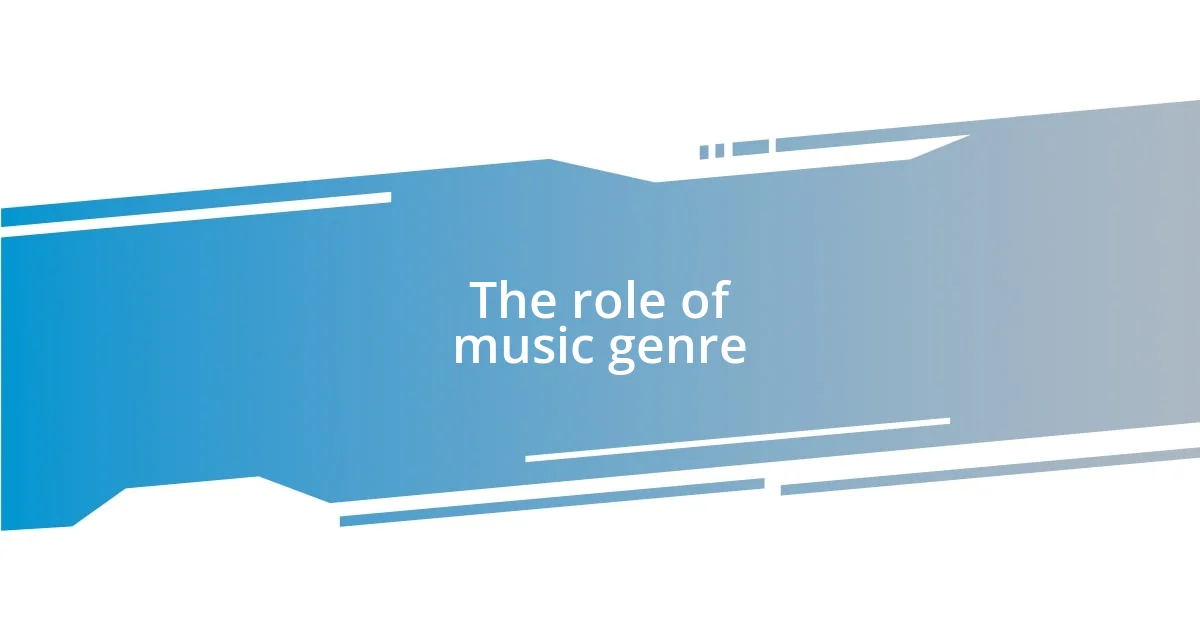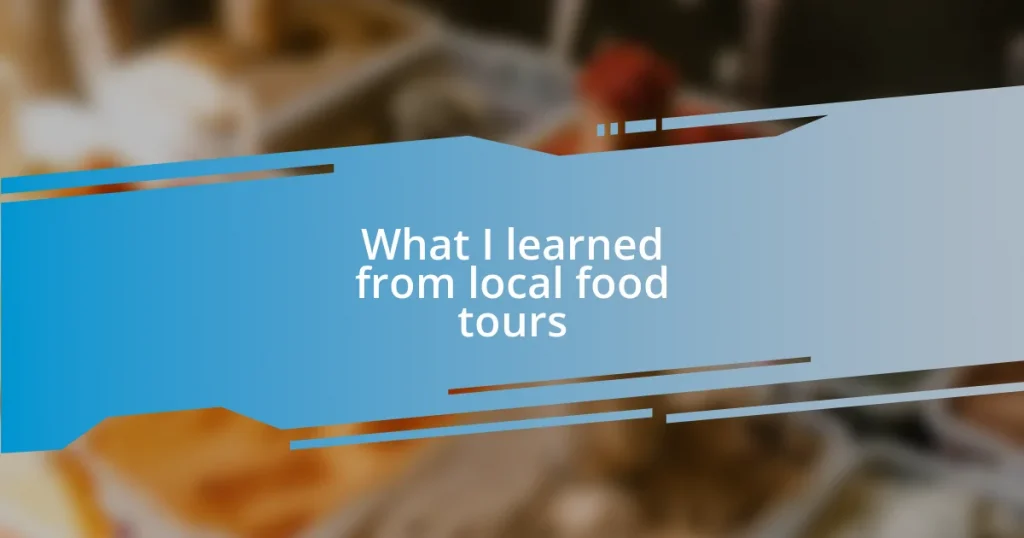Key takeaways:
- Aligning a band’s visual identity with its music fosters a deeper emotional connection with fans.
- Social media plays a crucial role in shaping a band’s image and engaging with the audience in real-time.
- Genuine fan engagement is essential for a band’s growth and creative process, creating a meaningful community around the music.

Understanding band image creation
Creating a band’s image is more than just choosing a logo or stage outfits; it’s about crafting a persona that resonates with your audience. I remember the early days with my band when we struggled to find a cohesive look. The moment we aligned our music with our visual style, everything clicked.
Think about it: how often do you connect certain colors or symbols with your favorite artists? This connection isn’t random; it’s a deliberate choice reflecting the band’s sound and message. I find that when a band’s image mirrors their music, it builds a deeper emotional connection with fans.
Every decision contributes to the larger narrative—what you wear, how you perform, even the artwork for your album. Isn’t it fascinating how a single image can evoke a whole range of emotions? I’ve seen firsthand how the right visuals can create buzz before a release, drawing in both new listeners and dedicated fans.

Key influences on band identity
The influences that shape a band’s identity are multifaceted, blending personal experiences and cultural elements. For instance, when my band decided to meld punk aesthetics with vintage styles, it was a reaction to our love for music’s rich history. I can still feel the excitement as we chose our outfits, which told a story about our musical roots while giving a nod to the future. It’s amazing how these visual elements reflect both our influences and aspirations.
Social media’s role in shaping band image cannot be overstated. I vividly remember the tension we felt as we navigated our online presence. Sharing behind-the-scenes moments and engaging with fans helped reinforce our identity, making us more relatable. It sparked a dialogue that helped clarify who we were as a band and what we stood for, creating a vibrant community around our music.
Ultimately, the broader musical landscape influences how bands curate their identity. I often analyze how emerging genres and popular trends inform our choices. When I listen to new artists, I see how they use visuals to complement their sound, often inspiring changes in our own approach. It’s a constant back-and-forth, where inspiration from others fuels our creativity and helps define what makes us unique.
| Influence | Description |
|---|---|
| Personal Aesthetics | Band members’ distinct backgrounds inform the overall visual style. |
| Social Media Engagement | Interactive platforms help build a relatable band persona through fan connection. |
| Musical Trends | Current genres and styles inspire visual and thematic choices in identity creation. |

The role of music genre
The music genre a band chooses significantly shapes its image. When my band experimented with different styles, I vividly remember the shift in our identity when we leaned into a more indie sound. Suddenly, the visuals we created—everything from our social media posts to our album covers—had to reflect the laid-back, artistic vibe of indie music. It was as if we were painting a portrait of who we wanted to be, and I felt more aligned with our artistic vision than ever.
- Different genres establish specific expectations and aesthetics.
- Indie often embraces a raw, unrefined look, reflecting authenticity.
- Pop might lean towards polished visuals and vibrant colors for mass appeal.
- Metal imagery often showcases darker themes, which resonate with its heavier sound.
As I dove deeper into exploring genres, I noticed how each can evoke a unique emotional response from fans. I remember crafting a set for a local festival, focusing on a punk-inspired aesthetic, with leather jackets and rebellious graphics. The energy from the crowd felt electric, almost like they were feeding off the visuals that complemented the music. It highlighted how powerful the connection between genre and image can be, transforming our performance from mere sound to a full-on sensory experience.

Visual aesthetics and branding
Visual aesthetics are the canvas on which a band paints its identity and message. I still remember the first time we sat down to discuss our branding; we threw ideas around like confetti, excited about the visuals that would encapsulate our sound. Choosing a color palette that embodied our music’s energy felt transformative. It wasn’t just about looking cool; it was about telling our story through every image we shared, making a statement that would resonate with our audience.
In crafting our visual identity, I realized how essential it was to strike a balance between originality and familiarity. For my band, using elements from our different backgrounds—like incorporating vintage art styles—allowed us to stand out while inviting listeners to relate to our roots. I think about the times we received messages from fans who connected with our imagery. It made me wonder: how deeply do visuals influence the way music is perceived? I’ve found that a striking image can set the tone for a song even before a note is played.
Branding isn’t just a matter of aesthetics; it is about creating an emotional connection with our audience. I recall designing our first merchandise line; we focused on symbols that resonated with our message—things that sparked conversation. The thrill of seeing fans wear our gear, proudly displaying a piece of our identity, still gives me goosebumps. This shared visual language went beyond the music and transformed how we engaged with our community. It made me appreciate how powerful true visual branding can be in shaping not just how we present ourselves, but how we are perceived by the world.

The impact of social media
The rise of social media has fundamentally changed how bands communicate their image to the world. I remember feeling both excited and overwhelmed the first time we launched our Instagram account; the immediate feedback from fans was exhilarating. It was fascinating to see how a well-timed post could spike engagement and influence our aesthetic choices. Did I ever anticipate that a simple snapshot backstage could connect us so closely with our audience? I honestly didn’t, but those moments underscored the power of social platforms in shaping our narrative.
Through social media, I realized that consistency is key. I often find myself scrolling through our old posts, reflecting on how our visual story evolved over time. For instance, the transition from candid practice room shots to curated theme-based series, with each photo aligning with a specific song release, was eye-opening. I felt pride in curating content that resonated with our fans and also captured our growth as artists. It made me wonder: how much of our image is crafted versus authentically lived?
Social media also gives us the flexibility to experiment with our image in real-time. I vividly remember the buzz when we tried out a more avant-garde style for a single release, using moody visuals and abstract concepts. The response was a mix of admiration and confusion, but it opened up a dialogue that brought our community closer together. It’s thrilling to think how social media can transform audience reactions into a living conversation about who we are. How often do you get to reshape your identity in front of so many eager eyes? For me, it was a game changer—a journey of self-discovery along with our fans.

Engagement with fans and community
Engagement with our fans and the wider community has been central to our band’s journey. I remember attending a local music festival where we could interact with our listeners face-to-face. The joy on fans’ faces while sharing their stories about how our music impacted their lives moved me deeply. It made me realize that genuine connections extend far beyond the stage.
One particular experience stood out—organizing a meet-and-greet after a show. It was incredible to hear fans share their interpretations of our songs and the emotions they felt when listening to them. In those moments, I felt an overwhelming sense of gratitude. It prompts me to ask: how often do we, as artists, pause to truly listen to our audience? It’s a relationship built on mutual respect, where their insights enrich our creative process.
Creating spaces for fans to engage with us is something I cherish. We started a community forum where fans could share their art inspired by our music. The vibrancy of their contributions took me by surprise! Seeing our songs spark such creativity made me think: can a band thrive without genuinely nurturing its fanbase? For me, the answer is clear—our music flourishes in tandem with the love and support from those who listen. It’s a powerful reminder that together, we can create something truly beautiful.
















